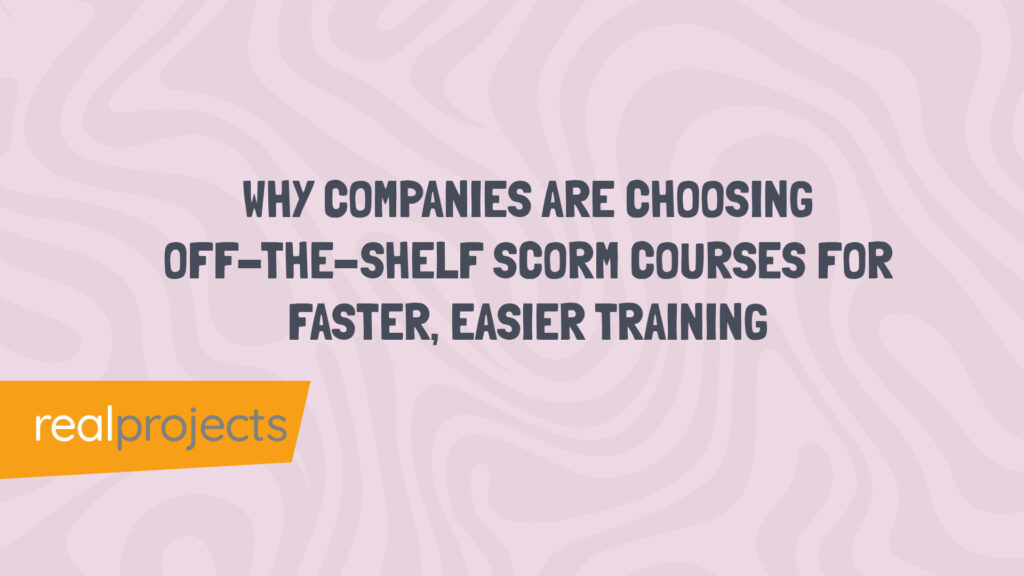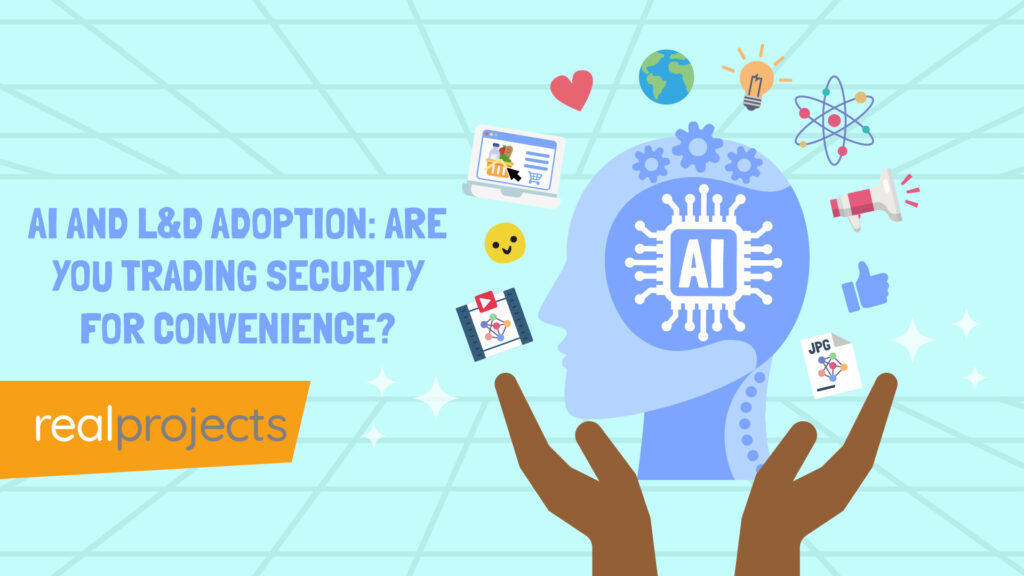Data is transforming Learning and Development (L&D).
It’s not just about numbers.
It’s about insights that improve outcomes, drive decisions, and connect learning to organisational goals.
With the right approach, L&D leaders can uncover trends, solve problems, and show their value in a measurable way.
The Basics
- What is Data Storytelling?
It’s the process of turning raw data into meaningful insights and stories that support strategic decisions. - Why Does It Matter?
Data storytelling helps leaders understand how learning impacts individuals, teams, and the wider organisation. - Key Tools:
Platforms like Power BI, Tableau, or even Google Sheets and Excel can help create visuals and reports that highlight key trends and opportunities.
How Do You Start
Start small:
- Pick one report from your LMS or LXP.
- Figure out the key story it tells about your training programmes.
- Use simple tools to visualise the data and focus on actionable insights.
- Share your findings with stakeholders to start making more informed decisions.
Reality Check
Most L&D leaders struggle to connect data to strategy.
Common barriers include poor data quality, overwhelming metrics, or lack of tools.
Simplify your approach: focus on meaningful insights like engagement, completion rates, and ROI.
Don’t overcomplicate things at the start. You don’t need massive dashboards or big data projects. Understand what’s involved and the resources available.
Most data projects fail because people can’t capture and analyse data. Keep things simple.
Why Data Matters in Learning and Development
Data is central to modern organisations, and L&D is no exception.
Not sure about the value of data? Take a look at how sport has transformed sport, and it’s not just on the pitch or field. Data is now transforming the customer experience with companies like La Liga Tech and the Premier League in football understanding the value of data.
Take some time to see how data is used in sport – they’ve developed teams of analysts and don’t just expect to understand the data. They use data analysts, performance analysts, recruitment analysts and more.
Without context, raw data can feel like noise—a jumble of metrics that’s hard to interpret or act on.
For many L&D professionals, LMS or LXP reports seem like a data dump rather than a resource for actionable insights. Don’t expect to be a data analyst overnight.
The key is understanding how to turn these numbers into something that informs real business decisions.
Recent Insights on Data in Learning and Development (2023-2024)
Strategic Alignment Challenges
- Insight: 45% of Chief Learning Officers (CLOs) feel only “somewhat connected” or “very disconnected” from their company’s strategic direction.
- Trend: 67% of CLOs now measure their department’s success against key performance indicators, showing progress in aligning L&D with business goals.
- Source: Financial Times, November 2024
Importance of Data Storytelling Skills
- Insight: Data storytelling and visualisation are critical for building credibility and securing stakeholder buy-in.
- Practical Advice: Use both quantitative and qualitative data to inform design choices and measure return on investment.
- Source: eLearning Industry, September 2023
Utilising LMS Data for Advanced Insights
- Insight: Organisations are leveraging LMS data for real-time insights and holistic views of performance.
- Approaches: Use native LMS reporting tools or access data directly for deeper analytics.
Understanding how data is used in L&D doesn’t just show what’s happening—it reveals why it’s happening.
These insights can guide decisions and strategies.
But there is also a reason why people don’t understand the data. You need to get the right people involved. This is where storytelling comes in.
From Numbers to Narratives: The Art of Data Storytelling
Raw data by itself isn’t helpful.
Data storytelling transforms that noise into actionable insights, connecting learning outcomes to business objectives.
You can’t just hand over a spreadsheet and expect stakeholders to understand its value.
A clear narrative brings data to life and helps leaders make informed decisions.
For instance, if a course designed for North American employees gains unexpected traction in Asia, that’s not just an interesting observation. It’s potentially an unmet demand and an opportunity to expand your global training strategy.
Tools like dashboards, and trend analyses can be crucial in turning isolated metrics into compelling stories. But you need to understand how you can deliver them. People need to be able to understand them. UI/UX is important in your delivery of data.
Tools and Techniques: Enabling Data-Driven Decisions
To use data effectively, you need the right tools.
Think of platforms like Power BI, Tableau, or even Google Sheet and Excel as potential enablers.
These tools help create visuals and reports that reveal trends and inform decisions, such as:
- Dashboards: Centralising key metrics like completion rates, engagement trends, and skill tracking.
- Geographical Maps: Showing where training is accessed and uncovering new growth markets.
- Interactive Reports: Letting stakeholders explore data from different angles.
Scott Hewitt advises: “The challenge is that you need good, clean data. Often, teams feel overwhelmed and don’t know where to start, trying to do too much. You don’t need massive dashboards—start small. Analyse, review, and focus on the data that will truly make a difference.”
These tools turn static data into dynamic insights, making it easier to see patterns, identify challenges, and take action.
Get a designer involved. You need to understand how your data will be presented. People need to be able to understand the data.
Practical Applications: Data’s Role in Enhancing L&D
Imagine running a training programme and noticing engagement drops sharply after Module 3.
Without data, you might ignore it. But with data, you can find the root cause—maybe Module 3 is too long or isn’t mobile-friendly. It might not be loading.
Using data helps leaders go beyond basic analytics to solve real problems, such as:
- Identifying which skills are most needed and tailoring courses accordingly.
- Tracking compliance training completion rates to reduce organisational risk.
- Demonstrating ROI by linking training outcomes to business performance.
One L&D team tracked training hours across departments and discovered scheduling conflicts were stopping employees from completing courses.
By adjusting schedules, they improved compliance and satisfaction.
You can use data and AI to analyse your data to find trends with your data. Match your data to your user groups and even to IT support calls.
Overcoming Challenges: Data Quality and Audience Alignment
Not all data is good data.
Inconsistent or poorly documented data can lead to bad conclusions.
Scott Hewitt explains: “My advice? Start. Too many people overthink and spend months planning. Test and measure. Even using a Google Sheet to capture data can help you see trends quickly.”
Tailor your insights to the audience. HR leaders might care about engagement, while a CFO wants to know ROI. Aligning your data with their priorities ensures it’s impactful.
Best Practices for Effective LMS/LXP Data Storytelling
To make your data work, follow these steps:
- Know Your Audience: Tailor your reports to their needs.
- Connect the Dots: Combine datasets to uncover deeper insights.
- Start Small: Focus on a few metrics to avoid overwhelming your audience.
- Use Visuals: Clear graphs and dashboards go a long way.
- Humanise the Data: Share real-world examples of its impact.
- Be Consistent: Regular reporting builds trust and keeps stakeholders engaged.
Building a Data-Driven L&D Strategy
Data is no longer optional for L&D, it’s essential.
By using tools, crafting clear stories, and addressing challenges head-on, you can unlock the power of your LMS/LXP data. Not just that, you can bring in other data from across the L&D departments.
Start small.
Pick one report.
Find the story it’s telling.
Then refine your approach, build dashboards, and expand your insights.
Understanding how data is used in L&D is the first step to driving meaningful change in your organisation.
Questions
Why is data important for development?
Data guides decisions by showing what’s working and what’s not. It highlights gaps, tracks progress, and helps allocate resources effectively, ensuring development efforts achieve their goals.
What is data used for in teaching?
Data in teaching identifies student needs, monitors progress, and evaluates learning methods. It helps tailor instruction, improve outcomes, and ensure resources are used effectively.
What is data analytics in training and development?
Data analytics in training and development examines trends, identifies skill gaps, and measures programme effectiveness. It transforms raw data into insights that guide strategies and improve outcomes.
Why is data learning important?
Data learning builds the skills to analyse and interpret information, supporting better decisions. In L&D, it helps improve engagement, customise learning paths, and measure the success of training efforts.



